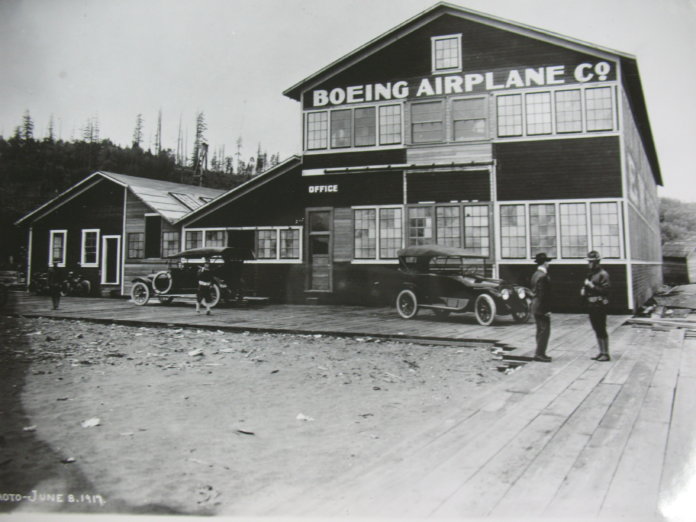Over the last 100 years, the world has changed tremendously.
For perspective, this year at Abundance 360, I gave a few fun examples of what the world looked like in 1917.
This blog is a look at what the world looked like a century ago and what it looks like today.
Let’s dive in.
In 1917…
One hundred years ago, things looked a little bit different.
1. World Literacy Rates
– 1917: The world literacy rate was only 23 percent.
– Today: Depending on estimates, the world literacy rate today is 86.1 percent.
2. Travel Time
– 1917: It took 5 days to get from London to New York; 3.5 months to travel from London to Australia.
– Today: A nonstop flight gets you from London to New York in a little over 8 hours, and you can fly from London to Australia in about a day, with just one stop.
3. Average Price of a US House
– 1917: The average price of a U.S. house was $5,000. ($111,584.29 when adjusted for inflation).
– Today: As of 2010, the average price of a new home sold in the U.S. was $272,900.
4. The First Hamburger
– 1917: The hamburger bun was invented by a fry cook named Walter Anderson, who co-founded White Castle.
– Today: On average, Americans eat three hamburgers a week. That’s a national total of nearly 50 billion burgers per year. And now we’re even inventing 100 percent plant-based beef burgers… produced by Impossible Foods and available at select restaurants.
5. Average Price of a Car in the US
– 1917: The average price of a car in the US was $400 ($8,926.74 when adjusted for inflation)
– Today: The average car price in the US was $34,968 as of January 2017.
6. The First Boeing Aircraft
– 1917: A Boeing aircraft flew for the first time on June 15.
– Today: In 2015, there were almost 24,000 turboprop and regional aircraft, as well as wide body and narrow body jets, in service worldwide.
7. Coca-Cola
– 1917: On July 1, 1916, Coca-Cola introduced its current formula to the market.
– Today: Today, Coca-Cola has a market cap of about $178 billion with 2015 net operating revenues over $44 billion. Each day, over 1.9 billion servings of Coca-Cola drinks are enjoyed in more than 200 countries.
7. Average US Wages
– 1917: The average US hourly wage was 22 cents an hour ($4.90 per hour when adjusted for inflation)
– Today: The average US hourly wage is approximately $26 per hour.
8. Supermarkets
– 1917: The first “super” market, PigglyWiggly, opened on September 6, 1916 in Memphis, TN.
– Today: In 2015, there were 38,015 supermarkets, employing 3.4 million people and generating sales of about $650 billion.
9. Billionaires
– 1917: John D. Rockefeller became the world’s first billionaire on September 29.
– Today: There are approximately 1,810 billionaires, and their aggregate net worth is $6.5 trillion.
For context, Rockefeller’s net worth in today’s dollars would have been about $340 billion. Bill Gates, the world’s richest man, is worth $84 billion today.
10. Telephones (Landlines vs. Cellphones)
– 1917: Only 8 percent of homes had a landline telephone.
– Today: Forget landlines! In the US, nearly 80 percent of the population has a smartphone (a supercomputer in their pockets). Nearly half of all American households now use only cellphones rather than older landlines. And as far as cost, today, you can Skype anywhere in the world for free over a WiFi network.
11. Traffic (Horses to Cars)
– 1917: In 1912, traffic counts in New York showed more cars than horses for the first time.
– Today: There were approximately 253 million cars and trucks on US roads in 2015.
12. US Population
– 1917: The US population broke 100 million, and the global population reached 1.9 billion.
– Today: The US population is 320 million, and the global population broke 7.5 billion this year.
13. Inventions and Technology
– 1917: The major tech invention in 1917? The toggle light switch.
– Today: The major tech invention of today? CRISPR/Cas9 gene editing technology, which enables us to reprogram life as we know it. And we are making strides in AI, robotics, sensors, networks, synthetic biology, materials science, space exploration and more every day.
14. High School Graduation Rates
– 1917: Only 6 percent of all Americans had graduated from high school.
– Today: Over 80 percent of all Americans graduated high school this past year.
15. Cost of Bread
– 1917: A loaf of bread was $0.07 ($1.50 when adjusted for inflation).
– Today: A loaf of bread costs $2.37.
16. Speed Limits
– 1917: The maximum speed limit in most cities was 10 mph.
– Today: The maximum speed limit in most cities is about 70 mph.
Just wait for the next 100 years.
Join Me
Abundance Digital Online Community: I’ve created a digital/online community of bold, abundance-minded entrepreneurs called Abundance Digital.
Abundance Digital is my ‘onramp’ for exponential entrepreneurs — those who want to get involved and play at a higher level. Click here to learn more.
Image Credit: Wikimedia Commons



